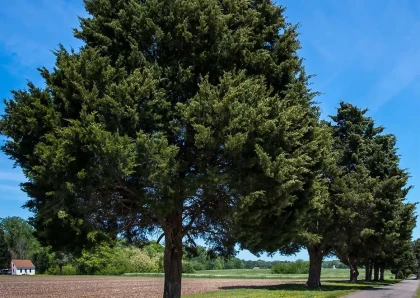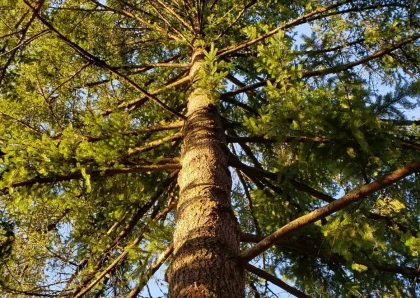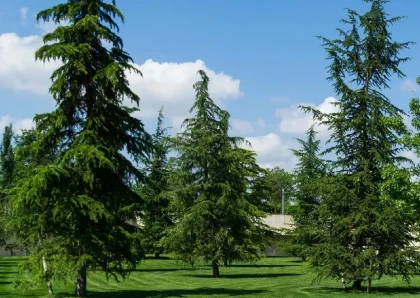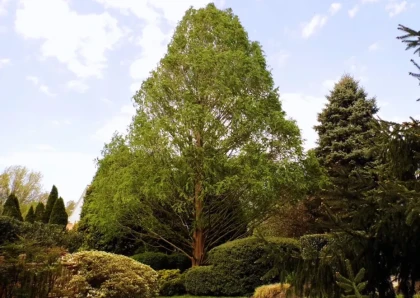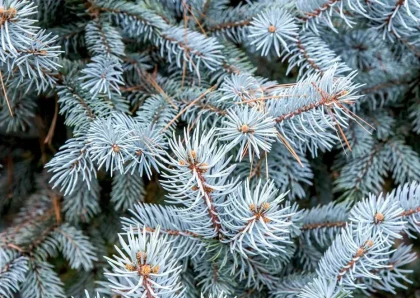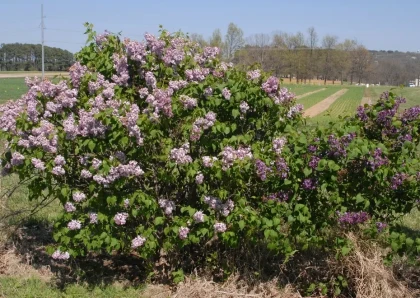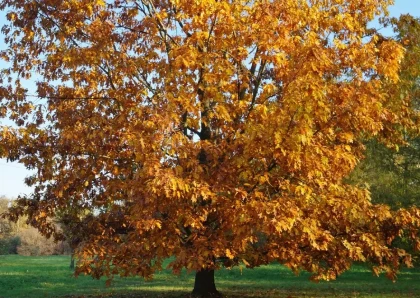
American Elder Tree
Overview
Description
The American Elder (Sambucus canadensis) is a deciduous shrub or small tree native to North America. It belongs to the Adoxaceae family.
Habitat
The American Elder tree is commonly found in a variety of habitats, including woodlands, forest edges, meadows, and along riverbanks. It prefers moist and fertile soils.
Characteristics
- Height: Can grow up to 5-12 feet tall (1.5-3.7 meters).
- Leaves: Pinnately compound leaves with 5-11 serrated leaflets.
- Flowers: Clusters of small, creamy-white flowers with a pleasant fragrance.
- Fruit: Produces dark purple to black elderberries, which are used for various culinary purposes.
- Bark: Grayish-brown with shallow furrows and ridges.
Uses
The American Elder tree has several practical uses:
- Culinary: The ripe elderberries can be used to make jams, jellies, pies, and syrups.
- Medicinal: Elderberries are known for their potential health benefits and are used in traditional medicine.
- Wildlife: The tree provides food and shelter for various birds and mammals.
- Landscaping: It is sometimes cultivated for its ornamental value.
Types of American Elder Trees
1. Sambucus canadensis
Sambucus canadensis, commonly known as the American Elderberry or Canadian Elderberry, is a widespread species found throughout North America. It produces clusters of dark purple to black elderberries.
2. Sambucus nigra
Sambucus nigra, also known as the European Elderberry or Black Elderberry, is a related species native to Europe and parts of Asia and North Africa. It is known for its edible berries and ornamental value.
3. Sambucus cerulea
Sambucus cerulea, commonly called the Blue Elderberry or Mexican Elderberry, is native to western North America. It produces blue to purple berries and is an important plant for wildlife.
Wood Products from the American Elder Tree
1. Small Crafts
American Elder wood is used to create small crafts, such as carving decorative items, wooden toys, and intricate figurines.
2. Walking Sticks
The straight and sturdy branches of the American Elder tree are often utilized to make walking sticks and canes.
3. Smoking Pipes
Some artisans use the wood from the American Elder tree to craft tobacco smoking pipes due to its natural beauty and workability.
4. Musical Instruments
American Elder wood can be used in the construction of certain musical instruments, such as flutes or other small instruments.
5. Turned Objects
The wood from the American Elder tree can be turned on a lathe to create bowls, cups, and other rounded objects.
Benefits of the American Elder Tree
1. Medicinal Uses
The American Elder tree has various medicinal properties. Its flowers and berries are used in traditional medicine for their potential benefits in supporting the immune system and promoting respiratory health.
2. Culinary Applications
The ripe elderberries from the American Elder tree are used in the culinary world to create delicious jams, jellies, pies, syrups, and even elderberry wine.
3. Wildlife Attraction
The American Elder tree provides food and shelter for various wildlife species. Birds, small mammals, and insects are attracted to its flowers and berries.
4. Landscaping and Ornamental Value
The American Elder tree can be used in landscaping due to its attractive foliage, flowers, and berries. It adds aesthetic value to gardens and natural areas.
5. Soil Stabilization
The extensive root system of the American Elder tree helps stabilize the soil and prevent erosion, making it valuable for land conservation purposes.
Cons of Using the American Elder Tree
1. Toxicity of Some Parts
Certain parts of the American Elder tree, such as the leaves, stems, and roots, contain toxic compounds. Ingesting these parts can lead to illness or discomfort.
2. Invasive Potential
In some regions, the American Elder tree can become invasive, outcompeting native vegetation and disrupting local ecosystems.
3. Short Lifespan
Compared to some other tree species, the American Elder tree has a relatively short lifespan. It may not be a suitable long-term landscaping option.
4. Disease Susceptibility
The American Elder tree can be susceptible to certain diseases, which can affect its health and appearance.
5. Limited Wood Applications
The wood of the American Elder tree is relatively soft and not as durable as some other hardwoods. This limits its use in certain woodworking applications.
Tips for Planting and Maintaining the American Elder Tree
1. Choose the Right Location
Plant the American Elder tree in a location that receives full or partial sunlight. Ensure the soil is well-draining and moderately fertile.
2. Planting Method
Plant the tree in a hole that is at least twice as wide as the root ball. The depth should be slightly shallower than the root ball's height. Backfill the hole with soil and water thoroughly.
3. Watering
Keep the newly planted American Elder tree well-watered during its first year. Afterward, it is generally drought-tolerant, but regular watering during dry spells is beneficial.
4. Mulching
Apply a layer of organic mulch around the base of the tree to retain moisture, suppress weeds, and improve soil health.
5. Pruning
Prune the American Elder tree in late winter or early spring to remove dead, damaged, or crossing branches. This will promote healthy growth and shape the tree.
6. Fertilization
American Elder trees generally do not require frequent fertilization. However, you can apply a balanced fertilizer in the spring if the tree shows signs of nutrient deficiency.
Conclusion
The American Elder tree, with its unique characteristics and versatile uses, is a valuable addition to landscapes, gardens, and natural habitats. Its medicinal properties, culinary applications, and wildlife attraction make it a beneficial plant to have. However, its potential toxicity and invasive tendencies in certain regions call for careful consideration when planting it. By following proper planting and maintenance practices, individuals can enjoy the benefits of the American Elder tree while also being mindful of its limitations. With the right care, this native North American tree can contribute to the beauty and ecological diversity of its surroundings.




